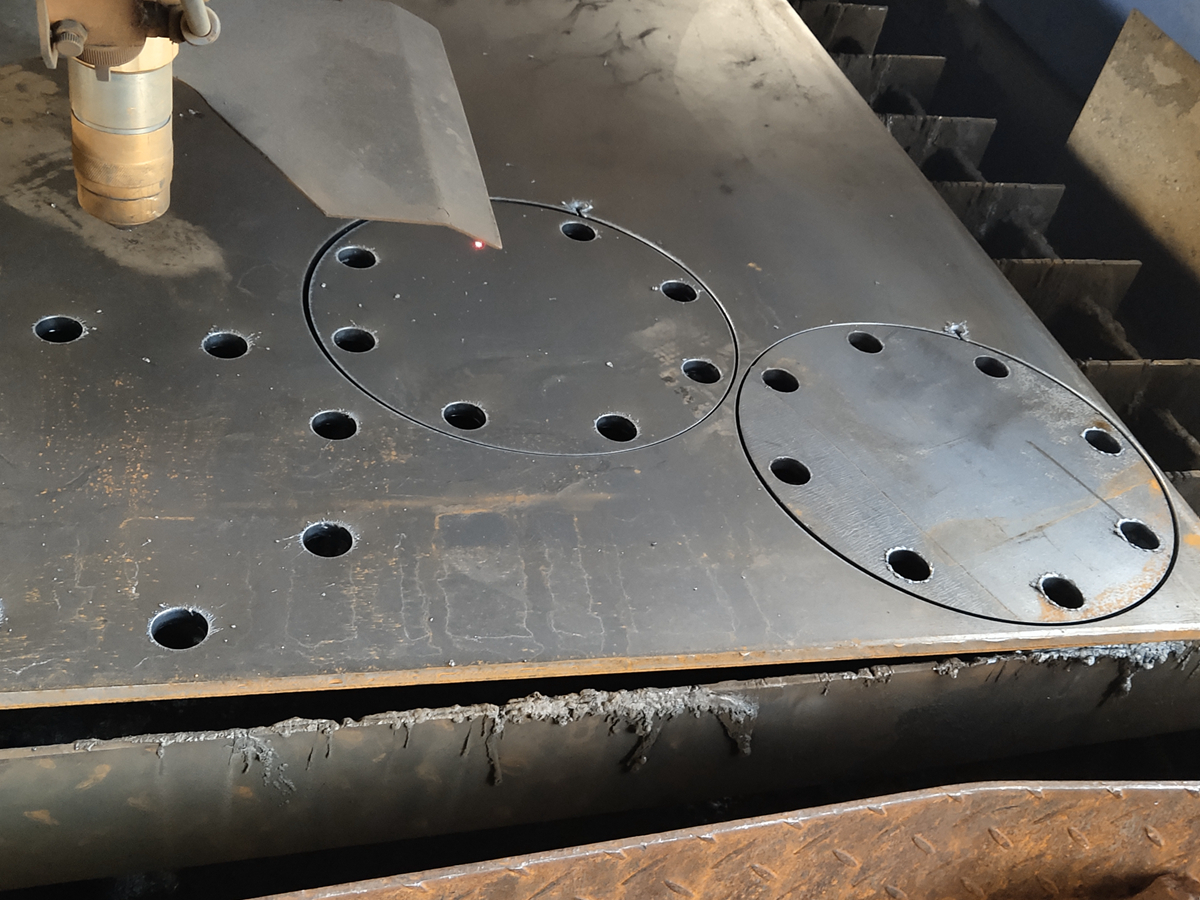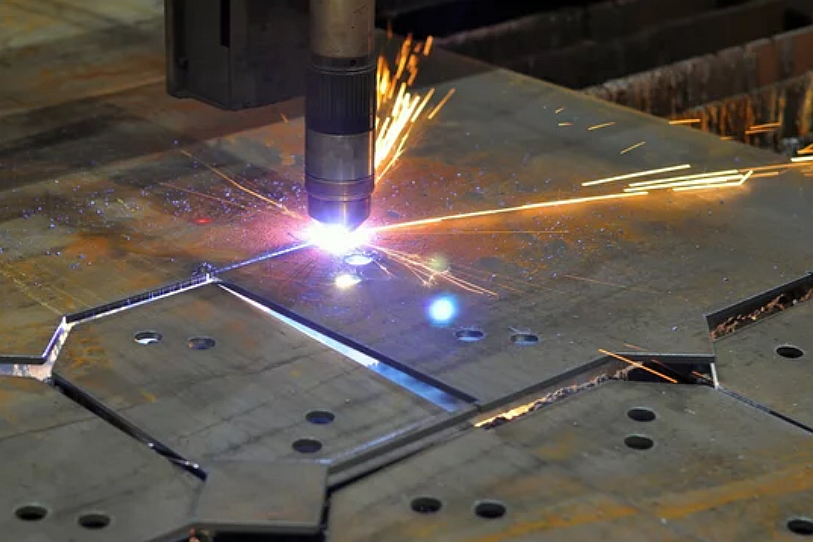Cutting at the Speed of Light: Enhancing Efficiency with Custom Plasma Cutting
Introduction
In today’s fast-paced manufacturing environment, efficiency and precision are critical factors for success. Plasma-cutting technology has emerged as a highly efficient solution, offering rapid, precise cutting capabilities that significantly boost productivity. This blog explores the advantages of custom plasma cutting, highlighting how it enhances industrial efficiency, reduces operational costs, and enables high-quality manufacturing outcomes.
Understanding Custom Plasma Cutting
Plasma cutting is a thermal technique employing a high-temperature plasma arc to melt and remove metal. This method is highly effective for cutting through conductive materials, such as steel, cast aluminum, copper alloys, and brass, offering substantial advantages over traditional methods, including mechanical cutting and oxy-fuel cutting.
Compared to traditional methods, plasma cutting provides:
Higher cutting speeds
Greater accuracy in detailed and complex cuts
Flexibility across a broad range of materials and thicknesses
Advantages of Plasma Cutting for Enhanced Efficiency
Faster Cutting Speeds
One of plasma cutting’s primary advantages is its ability to achieve rapid cutting speeds. Plasma can cut metals significantly faster than conventional mechanical or oxy-fuel methods, dramatically increasing throughput and reducing overall production lead times.
Precision and Accuracy
Custom plasma cutting delivers precise, accurate cuts, even on intricate designs and detailed shapes. This reduces the need for additional machining and finishing, such as grinding or polishing processes, saving valuable production time and costs.
Material Compatibility and Flexibility
Custom plasma cutting works seamlessly with various metal types and thicknesses, providing manufacturers with flexibility in material selection and reducing downtime associated with tool changes or setup adjustments.
Economic and Operational Benefits
Reduced Manufacturing Costs
Faster cutting speeds and minimal waste significantly reduce operational costs. Lower material waste, combined with fewer secondary operations, directly translates into substantial cost savings, particularly when compared to traditional cutting methods such as metal stamping.
Minimal Secondary Finishing
Due to the high precision and cleanliness of plasma cuts, the need for additional finishing processes, such as deburring, is drastically reduced. This leads to further operational efficiency and cost-effectiveness.
Enhanced Production Scalability
Plasma cutting’s speed and versatility support scalable manufacturing operations, enabling businesses to respond rapidly to fluctuating market demands without compromising product quality or incurring significant increases in manufacturing expenses.
Key Industry Applications for Plasma Cutting
Automotive Manufacturing
Plasma cutting is widely used to fabricate automotive components, such as chassis parts, brackets, and body panels, due to its rapid production capabilities and high precision, particularly when compared to traditional methods like die casting.
Aerospace and Aviation
Custom plasma cutting is crucial in the aerospace industry, where precision and speed are vital for manufacturing components with exacting tolerances, such as structural parts and specialized fittings made from high-performance alloys like Inconel 625.
Metal Fabrication and Construction
Plasma cutting efficiently produces structural steel elements, metal frameworks, and architectural components, enhancing productivity and precision within the construction and sheet metal fabrication industries.
Heavy Machinery and Equipment
Industries producing heavy equipment rely on plasma cutting for manufacturing durable, precision parts, which contributes to reduced lead times and improved product performance compared to conventional processes, such as sand casting.
Addressing Common Challenges in Plasma Cutting
Heat Distortion Management
One challenge of plasma cutting is managing thermal effects such as heat distortion. Proper material handling, strategic cut sequencing, and advanced control systems help minimize these issues, ensuring consistent quality.
Consistent Cut Quality
Maintaining cut quality requires ongoing attention to plasma torch maintenance, selecting the correct cutting parameters, and adjusting optimal equipment settings. Regular monitoring and adjustments, like those in CNC machining, ensure consistently accurate cuts.
Material Handling
Efficient material handling and preparation are crucial for maximizing the benefits of plasma cutting. Automated handling systems and carefully planned logistics, similar to those employed in high-efficiency die casting, can streamline operations, reducing downtime and increasing productivity.
Future Innovations in Plasma Cutting Technology
Automation and Robotics
Integrating automated and robotic systems promises even higher precision, consistency, and productivity, further optimizing plasma cutting in manufacturing processes.
Advanced Plasma Arc Precision
Continued advancements in plasma arc technology will enhance cut precision and edge quality, expanding plasma cutting applications into precision-demanding sectors like medical device manufacturing and telecommunications.
Sustainable Cutting Practices
Future developments aim to enhance the eco-friendliness of plasma cutting processes through the use of energy-efficient equipment, sustainable material practices, and reduced emissions, thereby aligning plasma cutting with environmental sustainability goals.
Conclusion
Custom plasma cutting represents a transformative manufacturing solution, providing unmatched efficiency, precision, and flexibility. Industries adopting plasma cutting can achieve significant productivity gains, reduce manufacturing costs, and maintain high-quality standards. Embracing advanced plasma-cutting technologies positions businesses to thrive in competitive markets, enhancing their operational efficiency and long-term sustainability.




